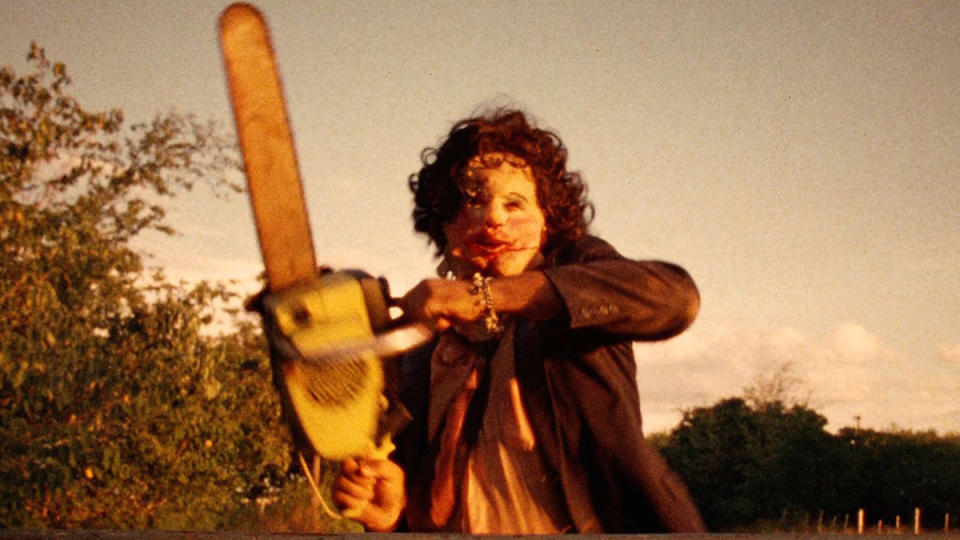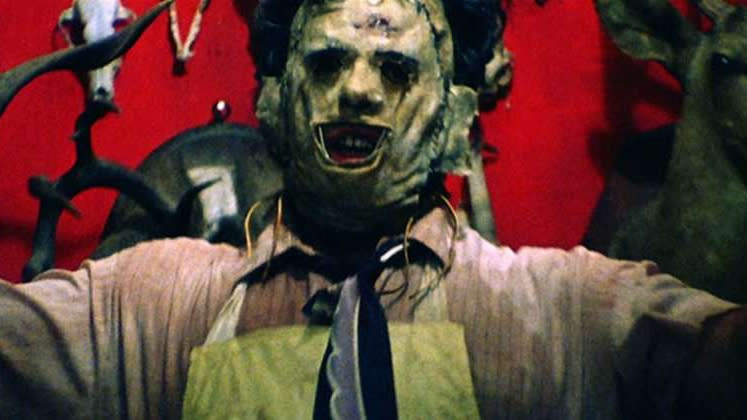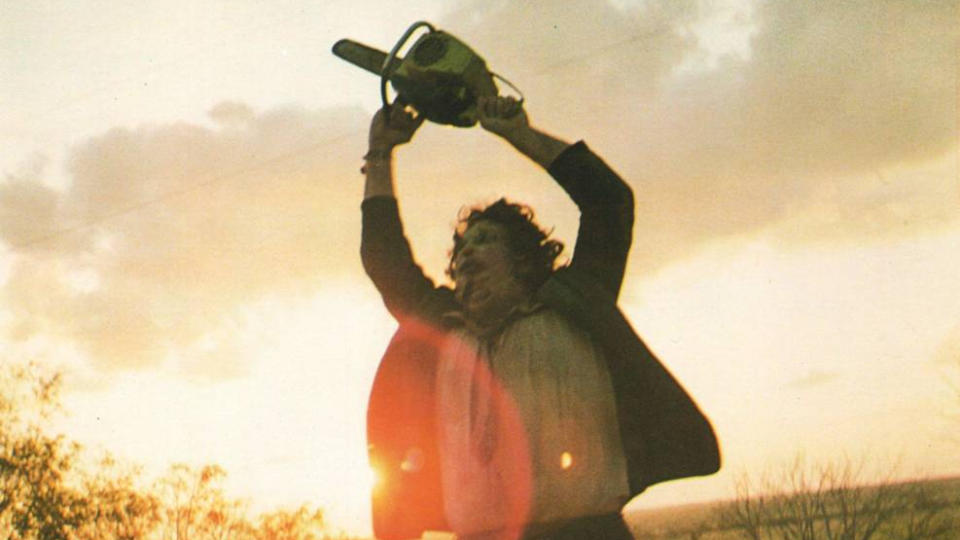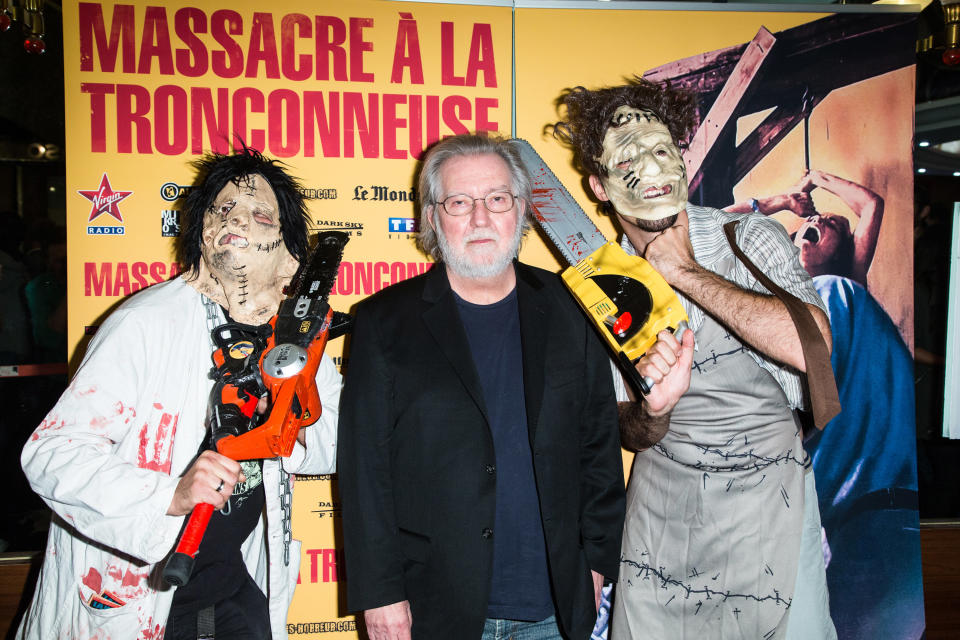'Texas Chain Saw Massacre' at 45: Inside the gruelling production of a horror classic

The Texas Chain Saw Massacre premiered in Austin, Texas, on 1 October 1974. In the 45 years since that fateful day, the film has become one of the most notorious horror classics in the history of the genre. It created an icon of its power tool-wielding killer Leatherface and spawned a franchise that has led to seven subsequent films. A new sequel is coming in the near future, with Evil Dead remake director Fede Alvarez set to produce.
The original film, directed by the late Tobe Hooper, was infamously banned in the UK by the BBFC and was subsequently caught up in the video nasties panic. It wasn’t until 1998 that a new print of the film was allowed to be screened in Camden, which then led to the BBFC classifying the film for release uncut with an 18 certificate.
Most surprisingly, Hooper had originally believed that, by limiting the amount of splatter and explicit gore, he could get a PG certificate from the American censors. Although they weren’t as heavy-handed as the UK classification board, they did give the film an X certificate, only to give a more permissive R rating to a slightly trimmed version.
Read more: Greatest horror sequels of all time
But even more interesting than the film’s brutal passage through the various censors is the story of how the movie got made. The finished product is the end result of one of the most gruelling shoots in the history of American cinema.

The House
When Tobe Hooper set out to make his unflinching tale of a cannibalistic family, he was inspired by graphic coverage on local news in San Antonio, as well as the tale of Ed Gein — the same killer who would inspire Psycho and The Silence of the Lambs. Hooper was a sophomore director with almost no money. The film’s budget was less than $140,000 (£114,000), which is around $800,000 (£649,000) adjusted for inflation.
Fortunately, he had a terrific location to work with. The primary location for the film was an early 20th century farmhouse close to the small town of Round Rock. Ron "Smokey" Isgur was the owner, who played on a softball team that, for the season in question, was sponsored by a commercial art company run by Robert Burns — art director on the film.
Read more: What happens to your brain during a horror film?
The production design of the Sawyer clan’s home was top-notch, and it seems that’s largely because it was done for real. The farmhouse was filled with furniture made from animal bones and most of that furniture was given a latex-like upholstery designed to look like human skin. Burns also drove around neighbouring farms and country roads to collect animal carcasses in various states of decomposition, while animal blood from a nearby slaughterhouse was dripped down the walls.
There’s verisimilitude, and then there’s an art director going out in search of roadkill. This was no ordinary horror film.

The Conditions
The schedule on Texas Chain Saw Massacre was punishing. In a 2004 interview with CNN, Leatherface actor Gunnar Hansen — who was working a summer job as a carpenter when he was hired — said that he was paid just $800 (£649) for his four weeks of shooting, working for seven days a week and often for between 12 and 16 hours each day. “I would have made more money if I'd worked in McDonald's those numbers of hours,” he quipped.
Matters were made worse by the Texas weather. It was not uncommon for the cast and crew to be working in temperatures of 100F (38C), with one day seeing the mercury rise to 110F (43C).
Read more: Lifting the lid on Don’t Look Now’s most famous scene
Hooper himself didn’t exactly help matters. He told Screen Anarchy in 2014 that he wouldn’t let the actors socialise with each other on the set. And spare a thought for Paul A. Partain, who played the wheelchair-bound Franklin. He was told not to change his clothes so that his character would be as sweaty as possible.

“That was the heaviest set I’ve ever been on,” Hooper told Indiewire. “It was miserable, really.
“That added to a part of the chemistry that caused certain behaviour. The heat, the smoke and bones are cooking under the hot lights. All of that, it’s kind of like a war dance, American Indian War Dance.”
The Violence
As previously mentioned, Hooper deliberately limited the on-screen gore in The Texas Chain Saw Massacre, to the extent that he expected a PG certificate. Partly, that was due to an artistic choice, but there was also financial pressure limiting the amount of effects work the production could carry out.
Read more: Samara Weaving says it’s time to bin the ‘final girl’ term
The theme with this movie was often that doing things for real was the best policy, and that occasionally applied to the violence too. Hansen said on one of the DVD commentaries for the film that, when they had trouble getting stage blood out of its tube, they cut star Marilyn Burns’ index finger for real with a razor. Stefan Jaworzyn wrote in his book about the film that Burns’ costume was so drenched in fake blood by the end of the shoot that it was almost completely rigid.

Hansen, too, proved very committed. During one scene, he reportedly instructed co-star William Vail not to move and then ran the very real chainsaw within three inches of his face. He also left “a big welt” on a co-star’s eye when he swung a prop hammer at them with real ferocity, according to Hooper’s Indiewire interview.
The climactic and infamous dinner table scene proved to be an arduous and nightmarish experience for all involved. Hooper told Indiewire that the scene is “chaotic” and that he “kept it as real as possible”. Most notably, the hammer that the exceptionally old Grandpa character fails to kill Burns’ character with was real and the actor was dropping the weapon very close to her head.
It was definitely a shoot to remember, even if not for the right reasons. Hooper said that virtually everyone involved got “hurt a little bit” during the process of making the movie.
The Legacy
“Everyone hated me by the end of the production,” said Hooper in his interview with Screen Anarchy. “It just took years for them to kind of cool off.”

But was it all worth it? The Texas Chain Saw Massacre is certainly held up as one of the ultimate horror classics, with Total Film listing it as the greatest movie in the genre’s history in a 2005 poll — a title it retained in 2010. More recently, in 2018, Esquire also crowned Hooper’s movie the best horror film ever made. It also proved financially successful, earning a box office haul of $31m (£25m), equal to $161m (£131m) when adjusted for inflation — a mammoth total given its tiny budget.
Read more: 50 years of Night of the Living Dead
The unusual and difficult sequences under which the film was created are, without question, indivisible from its status as one of the scariest movies ever committed to celluloid. It is palpably grubby from start to finish, with the grit and grime of its micro-budget exploitation seemingly oozing from every frame.
Along with Steven Spielberg’s infamous Jaws shoot, the chaotic summer of 1973 stands as a prime example of how the limitations of a troubled production can help to catch lightning in a bottle for something truly special.
The Texas Chain Saw Masacre is gruesome, disturbing and almost certainly a little distasteful — but it is undoubtedly special.

 Yahoo Movies
Yahoo Movies 
